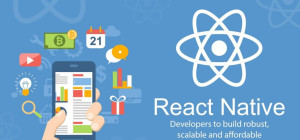 A modern and amazing phenomenon in the digital space is NFTs or non-fungible tokens. A non-fungible token (NFT) is blockchain data that is associated with a physical or digital asset. In the world of crypto, a token denotes a digital certificate of authenticity stored on a blockchain. Non-fungible tokens are basically digital assets that confirm ownership or authenticity of unique items, including art, music, collectibles, and even real estate.
A modern and amazing phenomenon in the digital space is NFTs or non-fungible tokens. A non-fungible token (NFT) is blockchain data that is associated with a physical or digital asset. In the world of crypto, a token denotes a digital certificate of authenticity stored on a blockchain. Non-fungible tokens are basically digital assets that confirm ownership or authenticity of unique items, including art, music, collectibles, and even real estate.
Regardless of the current NFT craze, the concept of non-fungible tokens traces back to 2014 when Kevin McCoy and Anil Dash introduced “Quantum” as one of the earliest non-fungible tokens. Though NFTs have revolutionized the digital ownership space, fractionalized NFTs are all the way more innovative. With the help of a reputed NFT Development Company, you can experience premium NFT software solutions that are specially designed for your business needs. In this blog, we will help you understand what multifunctional fractionalized NFTs are and guide you through the steps to create them.
About Multifunctional Fractionalized NFT
A fractionalized NFT is created by breaking down an NFT into smaller, exchangeable units that can be shared among various owners. This is unlike regular NFTs that a single person owns. When an NFT is fractionalized on an NFT development platform, the original token is kept in a vault, and a limited number of fungible tokens that are associated with parts of the NFT’s ownership are generated. These tokens can be purchased by anyone who wants to have a share in the NFT. It means they have shared ownership of the NFT. This transforms the nature of the original NFT, which was a unique digital entity, into a shared resource with different purposes. Fractionalized NFTs facilitate shared ownership, trading, loaning, governance, and more.
The present price of an NFT is called the implied value, and this can help an investor decide the entry price. The number of shares that can be purchased on the fractionalized market is the collectible supply. If there is a zero percent supply then that indicates that there is no NFT for sale. The reserve price is the minimum price for an NFT, and each NFT owner can have a say on how much they want to reserve. The reserve price is estimated by taking the weighted average of all the votes.
Steps to Create Multifunctional Assets
For the creation of multifunctional fractionalized NFTs, one needs to convert valuable items into digital tokens that can be traded in smaller parts, with clear rules and regulations. Now let’s examine the stages of creating multifunctional assets.
- Determine Your NFT Asset
Before one begins making your NFT, one needs to have a clear view of what kind of special digital or physical thing one wants to convert into a digital token. It can be anything from a digital art piece, a unique item, a property, a song, or anything else that has value and can be represented on the blockchain. The object one chooses is essential as it will determine the value of one’s NFT.
- Development of Smart Contract
To create an NFT that has multiple functions and can also be split into smaller pieces, one needs to write smart contracts on a blockchain platform like Solana, Ethereum, or Binance that supports NFTs and smart contracts. The smart contracts will let one build, operate, and enhance one’s multifunctional fractionalized NFT.
- Mint the Master NFT
To build a multifunctional fractionalized NFT, one needs to initially create the “master” NFT. This master NFT is the undivided token that proves the ownership of the asset. It is the source for splitting ownership into fungible tokens.
- Fractionalization
To enable shared ownership and trading, one needs a separate smart contract that handles the fractionalization of the NFT. This contract divides the master NFT into smaller, fungible tokens that are known as “shares” or “fractions”.
- Set the Number of Fractions
It is completely one’s choice on how many fractions one wants to divide the NFT into. The number of fractions determines the precision of ownership. For example, if one divides the NFT into 100 shares, each share indicates a 1% ownership of the NFT.
- Mint Fractional Tokens
One can mint the fungible tokens that indicate ownership in the NFT through a fractionalization contract. The ownership of these fractional tokens belongs to multiple people, each owning a fraction of the NFT. For example, if one splits the NFT into 100 shares, mint 100 tokens.
- Track Ownership
Ownership records are maintained by the fractionalization contract. It monitors who owns each fractional token, making the ownership evident and unchangeable. The information about the ownership has to be recorded on the blockchain for complete transparency.
- Transfer and Trading
Users can buy, sell, or trade the fractional tokens on the NFT marketplace or in DeFi platforms. This facilitates shared ownership and gives fractional owners the opportunity to trade their portions of the NFT asset.
- Voting and Governance
The governance mechanism lets fractional owners influence the NFT’s management. These mechanisms allow fractional owners to join in the decisions related to the NFT, such as selling, lending, or exhibiting it in virtual galleries. Governance can be obtained through voting mechanisms that are included in the fractionalization smart contract.
- Added Features
Depending on one’s goals, one can enhance the functionality of one’s multifunctional fractionalized NFT. Some additional features that can be considered include rentability, lending, revenue sharing, and automatic buyouts.
- Adherence to Law and Regulations
It is important to comply with legal and regulatory requirements for any and every blockchain project. Make sure that the multifunctional fractionalized NFT meets local and international regulations. Take legal help if needed, as the regulatory environment for NFT is evolving and can be complicated.
- Documentation and Sharing Information
It is essential to have clear and comprehensive documentation. Document the ownership structure, governance rules, and functionality of the multifunctional fractionalized NFT. The role of communication is crucial in this process as fractional owners and potential buyers should understand the rules and features of the NFT.
- Marketplace Integration
One can consider listing multifunctional fractionalized NFT on the NFT marketplace and platforms that support fractional ownership to make the buying and selling of fractional tokens easier. Through integration with the NFT marketplace, one can attract more potential buyers and investors for one’s NFT.
Conclusion
Multifunctional fractionalized NFTs are an amazing development in the NFT world as it opens up more opportunities for making valuable assets more accessible and promoting collaborations among a wide range of participants. Are you looking to unlock the power of digital assets? At Codezeros, we deliver world-class NFT Development Services that cover from front-end to back-end and smart contract development.




![Top CEOs under 30-The Young Guns Of Technology [Infographic]](https://lerablog.org/wp-content/plugins/wp-thumbie/timthumb.php?src=http://lerablog.org/wp-content/uploads/2015/03/the-young-guns-of-technology.jpg&w=300&h=140&zc=1)


